Domestic optimism rises at Detroit show
By John Gilbert
DETROIT, MICH. — Domestic automakers should have a big home-field advantage at Detroit’s North American International Auto Show, and they certainly did, kicking off the press preview days of the show, which runs through January 27, by sweeping the Car of the Year and Truck/Utility of the Year awards, after claiming four of the six finalist slots.
The Cadillac ATS claimed the North American Car of the Year honors, beating out the Honda Accord, while the Ford Fusion — once the odds-on favorite — slipped to third because of a combination of production recalls, delays in introducing its plug-in hybrid, and gripes about its connectivity system. With the 49 jury members allotting 10 points among finalists, the ATS wound up with 207 points, the Accord 159 and the Fusion 124.
Chrysler Group, LLC, was represented by the Ram 1500 full-size pickup truck, which had an even more substantial edge in winning the North American Truck/Utility of the Year. The Ram piled up 261 points to outdistance the Mazda CX-5, with 142, and the Ford C-Max, with 87. The CX-5 is an entirely new compact crossover SUV with Mazda’s technologically advanced Skyactiv drivetrain, and the C-Ma is a small utility wagon powered by only a hybrid or all-electric drivetrain, and while both met the new guidelines of the independent jury’s combined truck and utility segment, jury board members commented that voters obviously were attracted to the fact that the Ram was a “real” truck.
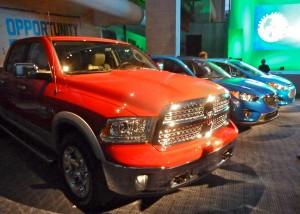
"Don't call me Dodge" Ram 1500 outpointed the Mazda CX-5 and Ford C-Max to win Truck/Utility of the Year.
Both award winners are comparatively traditional, with the Ram powered by either the Hemi V8 or a new Pentastar V6, while the compact Cadillac ATS has either a V6 with rear-drive, or a turbocharged 4. They were in stark contrast to the other two finalists in both car and truck competition, which featured high-tech high-mileage options — as did the array of flashy new vehicles displayed during the two press preview days at Cobo Hall. Vehicles from all over the world emphasized futuristic electric or electrically-boosted vehicles with high mileage potential.
Among the highlights were an all-new compact CLA from Mercedes, a downsized “4-door coupe” shape with a 211-horsepower turbocharged 4-cylinder and a stunning drag coefficient of 0.22, which the company claims is best in the industry. A revised 4-Motion system and a collision-prevention assist will be features. The CLA will be widely promoted at the Super Bowl — which, incidentally, will be played in New Orleans, at a facility now known as the “Mercedes-Benz Superdome.” Mercedes is also unveiling the revised E-Class mid-range sedan and a new S-Class luxury car. The E-Class will come in coupe, convertible and sedan, and also returns as a station wagon, as well as a high-performing AMG E-63. BMW introduced the 4-Series, which will become the name for all 3-Series coupes and convertibles, and its MINI division displayed a Cooper-Works sporty version of its 4-door Clubman.
Other German entries that attracted attention were Audi’s pair of “S” model sporty upgrades on already successful models, transforming them into the RS7 and the SQ5. The A7 sedan already had a sporty S7 version, and the RS7 is another step up the high-performance structure; the Q5 is a popular compact SUV, and the SQ5 takes that vehicle in a sportier direction. Volkswagen offers a CrossBlue concept, powered by the long-awaited and much-anticipated combination of a superb VW turbo-diesel with a hybrid for what should be exceptional fuel economy.
Other standouts include Honda’s Urban SUV Concept, slotted to fit just below the compact CR-V. Toyota unveiled its Corolla Furia concept, which could take the next-generation Corolla to stylish heights. Nissan showed the futuristic Resonance Concept hybrid — and Nissan is now making its own battery packs (in Smyrna plant, unprecedented in an industry that otherwise depends on electronics affiliates to produce hybrid battery packs. Nissan also introduced the Versa Note, a squareback version of its popular subcompact. Nissan’s upscale Infiniti says its new luxury replacement for the G37 will be called the Q50, offering a V6 or hybrid power.
From Korea, Hyundai showed off its Genesis HCD-14 concept coupe, and introduced Peter Schreyer, the former Audi designer who has remade Kia, Hyundai’s affiliate, into a style leader.
With all the high-mileage, future-is-now models from competitors, GM seemed alone in its big-engined, high-powered spotlight. Preceding the show’s preview days, Chevrolet captivated the assembled media — estimated as being over 5,000 by some counts — with a huge splash to introduce the C7, or seventh generation, Corvette. While it looks quite similar from the front, the new Corvette has dramatically wedgy lines from the side and resurrects the name Stingray, which was first used with the breakthrough 1963 Corvette fastback coupe. With a gigantic 6.2-liter V8 producing 450 horsepower and 450 foot-pounds of torque, and traditional pushrod valve actuation gaining benefits from variable valve-timing, direct injection, and cylinder deactivation, the Corvette captured the fancy of aging backers from the era when “bigger is better” pushed the U.S. V8-makers to the forefront.
The Corvette and the performance-aimed ATS put General Motors into the headlines of the Detroit newspapers and television broadcasts covering the show, where the reporters and announcers gushed over both vehicles, even while GM executives were humble in expressing relief that the cars indicated they had rebounded fully from the near-disastrous bankruptcy two years ago, when government loans rescued them.
Big power sells, or at least attracts major attention, in Detroit. Cadillac got far less acclaim for a car that might be far more significant for their future in a marketplace aimed at energy-efficiency, with the unveiling of the ELR, a racy sports coupe powered by a drivetrain based on the Chevrolet Volt — with all-electric operation for about 35 miles of range, converting to gas-engine-only operation after the battery pack is drained, giving the car a range of 300 miles. The oddity of the Volt is that in its insistence that it is not a hybrid, the supplemental gasoline engine does not recharge the battery pack to bolster electric operation. The ELR will be the same, with a 1.4-liter gas engine extending the car’s range from 35 to 300 miles. It will cost something beyond the $40,000 Volt.
Chrysler Group, LLC., had its Ram 1500, and chief executive Sergio Marchione said the compact Dart that was in the running for Car of the Year had too little power and promised to rectify that in the next few months. The Dart suffered from a delay in the new and most powerful 4-cylinder with Fiat’s MultiAir intake valve system that should allow the Dart to span from economy to sporty car, as was intended.
Otherwise, Chrysler’s Jeep division has redesigned the Grand Cherokee mainstay, and will offer the outstanding Pentastar V6 in the Wrangler, which has matured from off-road specialist to an off-road specialist with creature comforts and suspension and interior amenities to serve well on the road, as well. Fiat deflected rumors that it will bring in Alfa Romeo models to support the Fiat 500, but said it will bring in the new Maserati Quattraporte, with two exotic, high-performance engines designed by Maserati and built by Ferrari, another Fiat-owned brand. The 3-liter V6 has over 400 horsepower, and a 3.8-liter V8 has identical 523 figures for both horsepower and foot-pounds of torque. Two other Maserati models join that luxury sports sedan — a compact sedan, and a compact SUV.
Among domestic nameplates, however, Ford continues to set an impressive pace, despite losing out in both Car and Truck of the Year finals. The Fusion’s three gas engines and one hybrid are all doing well in their stylish new body, but the second hybrid, a plug-in unit aiming at 100 miles per gallon, was not ready in time, which might have cost the company a Car of the Year victory. Ford did display its new Atlas concept pickup truck, loaded with a new EcoBoost engine and numerous style and functional upgrades. But high-mileage is the watchword at Ford, with cars like the C-Max, Fiesta, Focus and even the Fusion offering a variety of powertrains that will include gas engines, turbocharged gas engines, plus hybrids and plug-in hybrids.
Wes Sherwood, Ford’s manager of electrification of vehicles, said: “We’re committed to getting the best fuel economy in every segment we’re entered in. Ford already beats Toyota in every segment where both companies compete, and we want to offer a portfolio that give all consumers the choice that best fits their needs.”
Comments
Tell me what you're thinking...
and oh, if you want a pic to show with your comment, go get a gravatar!


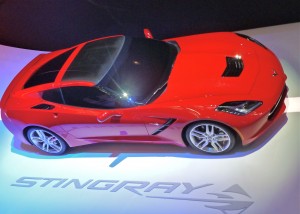
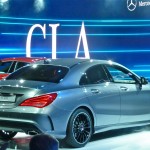
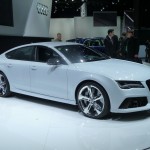
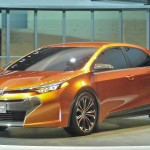
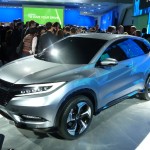
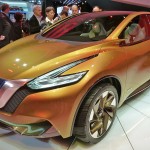
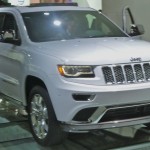
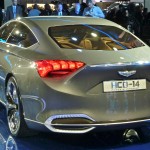
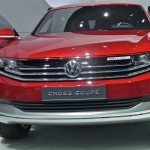
 John Gilbert is a lifetime Minnesotan and career journalist, specializing in cars and sports during and since spending 30 years at the Minneapolis Tribune, now the Star Tribune. More recently, he has continued translating the high-tech world of autos and sharing his passionate insights as a freelance writer/photographer/broadcaster. A member of the prestigious North American Car and Truck of the Year jury since 1993. John can be heard Monday-Friday from 9-11am on 610 KDAL(www.kdal610.com) on the "John Gilbert Show," and writes a column in the Duluth Reader.
John Gilbert is a lifetime Minnesotan and career journalist, specializing in cars and sports during and since spending 30 years at the Minneapolis Tribune, now the Star Tribune. More recently, he has continued translating the high-tech world of autos and sharing his passionate insights as a freelance writer/photographer/broadcaster. A member of the prestigious North American Car and Truck of the Year jury since 1993. John can be heard Monday-Friday from 9-11am on 610 KDAL(www.kdal610.com) on the "John Gilbert Show," and writes a column in the Duluth Reader.